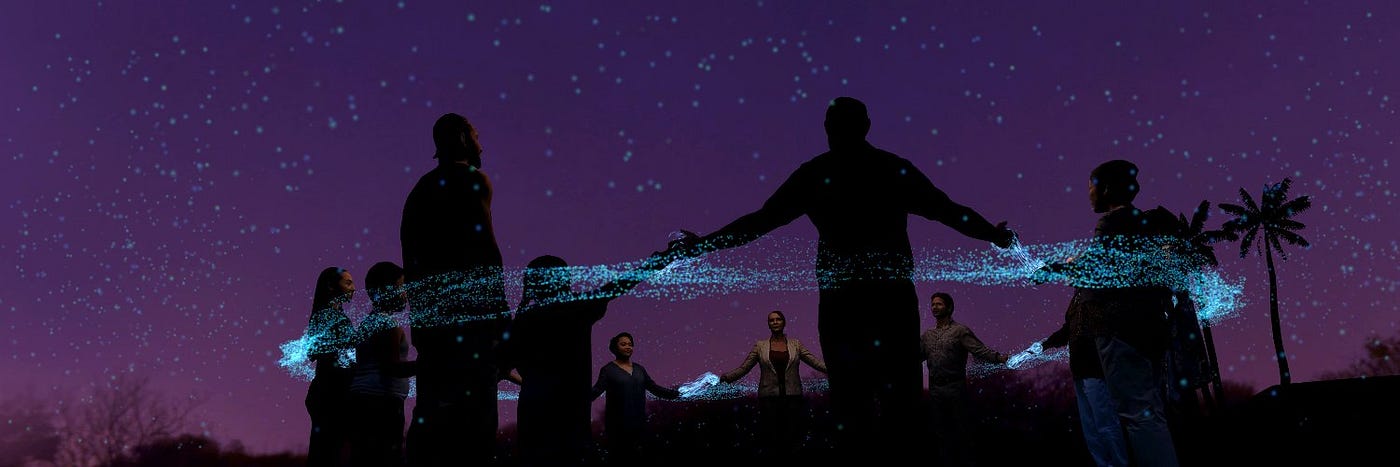
Each year, SXSW in Austin attracts a selection of innovative works from across the immersive spectrum. Previous years have seen large scale marketing activations that brought the likes of the HBO series Westworld to life and the film festival has played host to many cutting edge virtual reality experiences.
While the NoPro team is not able to attend SXSW this year in person, a portion of the SXSW XR Experience has been made available for remote access. Even the name itself is a reflection of the new center of gravity in digital immersive work, with the program having previously been called the “Virtual Cinema.”
Not all of the SXSW XR work was available and we had some issues access what had been made available through the VAST platform, which is still in development. We supplemented where we could with direct connections from project teams. Nevertheless: the final tally will be below that which we would have experienced on-site and even below the number if technical matters had not been an issue.
BONUS PODCAST
NoPro’s Executive Editor Kathryn Yu and Publisher Noah Nelson share their impressions of some of the offerings in this year’s SXSW XR Experience field.
Included in this episode:
Madame Pirate: Becoming A Legend
Surviving 9/11 — 27 Hours Under The Rubble
On The Morning You Wake (to the End of the World)
Gumball Dreams
Minimum Mass
Alphabetical By Title

Black IceInteractive 6 DOF experience
In a sci-fi dystopian world, a young woman visits a memory editor named David in an effort to suppress a memory she can no longer live with; that is to say, she wants her brain literally altered and (of course) you’re the only person who can help her… but not without some unintended consequences.
In this particular VR experience, you have to physically re-enact her memory, bringing it to life while also modifying it to be less damaging. This takes the form of completing small actions like flipping a lever, handing her some medication, wiping off blood, or taking the wheel of a car. There are also bigger tasks of the participant, like embodying the different people inside her memory, taking advantage of one of VR’s superpowers: shifting perspectives.
This attention to detail — from small interactions or the fact that you can hear David’s voice inside your head — really brings the cyberpunk world of Black Ice to life. It’s also refreshing to see more and more projects straddle the line between game and film the way Black Ice does. — Kathryn Yu

Choctaw Code Talkers 1918
360 Video; VAST platform
The main thing you need to know about Kilma Lattin and Catherine Eng’s Choctaw Code Talkers 1918 is that if you know nothing of the pivotal role Native American solders played in the world wars by transmitting military intelligence in their native languages, you’re going to learn a whole lot. Even if you were aware of the practice, you’ll learn some details that you might never have come across in your history dives. I, for instance, didn’t know that the practice started in World War I, even though in hindsight it makes sense.
This thread in history, and the dark ironies it raises about the way the United States both consumes the cultures of its disparate peoples while keeping an eternal tension around what it means to be an American, is as relevant now as it was when it unfolded a century ago.
Compelling enough as a short film, I can’t entirely say why it’s produced in virtual reality, as the production doesn’t take advantage of the affordances of the form while using a some of the aesthetic tropes that have become associated with VR documentary. In any case, a fine short. — Noah Nelson
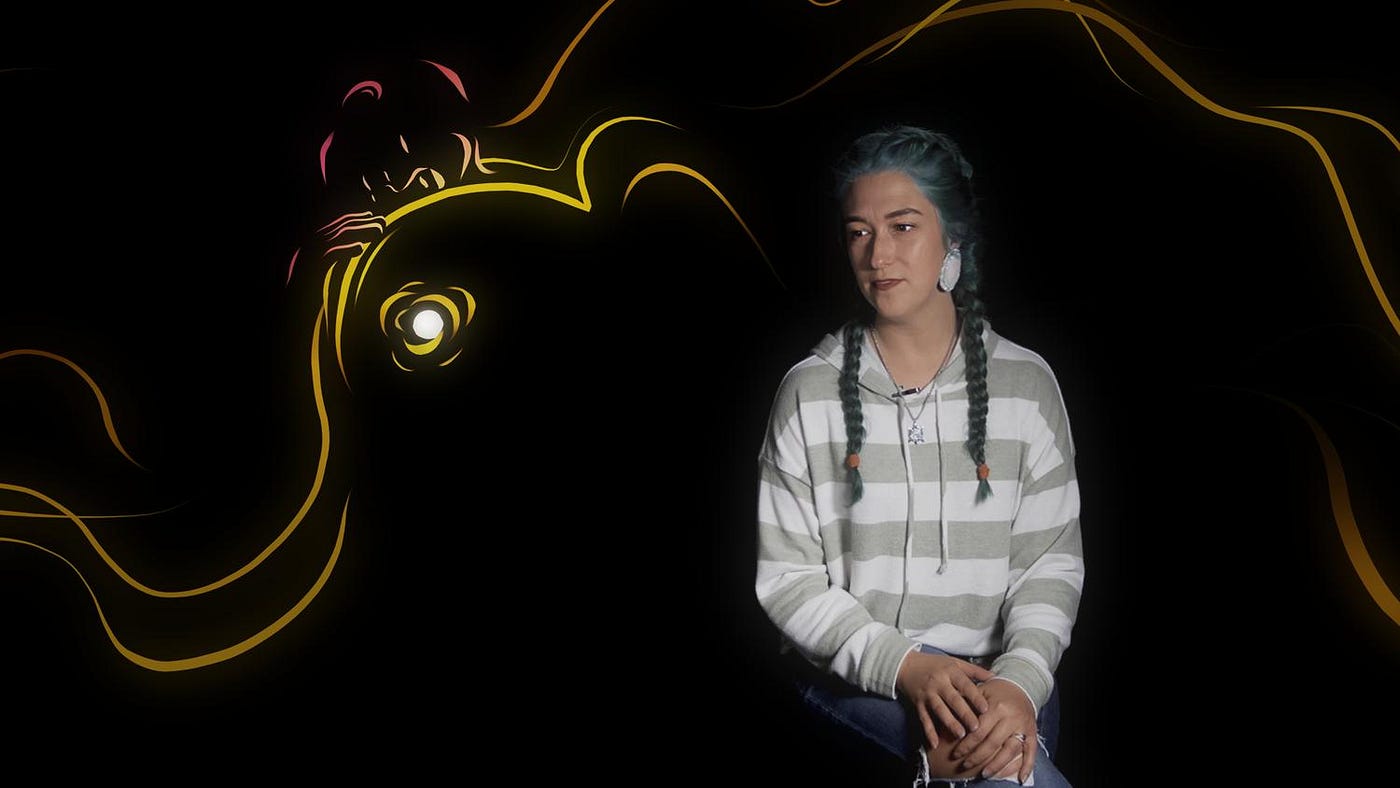
The Choice
Interactive 360 Film; VAST platform
This powerful interactive documentary allows viewers to learn the story of Kristen, a young Indigenous woman living in Austin who discovered almost too late that she needed a life-saving abortion. During the course of her pregnancy, she learned that her unborn child had significant medical issues which could have been diagnosed earlier but were not, due to a Texas state law allowing health care professionals to withhold information from patients.
The Choice alternates between seeing Kristen speaking directly to us (captured through volumetric video) about her experiences and well-crafted visualizations which put us in Kristen’s shoes as recounts the details of her harrowing journey in seeking an abortion before the deadline. On occasion, question prompts appear in the headset as viewer responses to Kristen; simply reaching out and touching them will select a question to ask Kristen next.
While the experience feels mostly linear (and like the prompts don’t really change what happens), Kristen’s story is both gripping and horrifying at the same time; it’s gut-wrenching hearing her discuss not only what happened during this particular pregnancy but how it’s affected her outlook on having children at all given current and pending legislation on the books in several US states, making The Choice a must-watch VR documentary. — Kathryn Yu

GENESIS
360 Film; VAST platform
The sweep of geologic time, rendered in 360 CGI from the chaotic formation of the Earth and its moon to the dawn of the Anthropocene, rendered through the lens of a single “cosmic day” is the theme of GENESIS. As such it falls into the camp of CGI edu-science programming.
To be certain, there’s plenty of “wow” imagery peppered through the short’s 13 minute runtime — although I’m not sure why they didn’t run with the more accurate (or is it just en vogue) feathered dinosaurs during our time with them. Much of the spectacle is around brief vignettes as we sprint through the cosmic day, beholden to the short’s narrative clock, as opposed to being given time to absorb the eras at our own rate. This is cinematic VR in the sense that the VR is in service of the relentless march of the timecode.
There’s also a nice thematic note about the present moment being the dawn of a new day whose fate is now in our collective hands.
Yet, that’s about it. An interesting enough frame for middle schoolers to consider, but something that doesn’t really lean into the affordances of 360 any more than you might find in a dome show at your local science center. — Noah Nelson
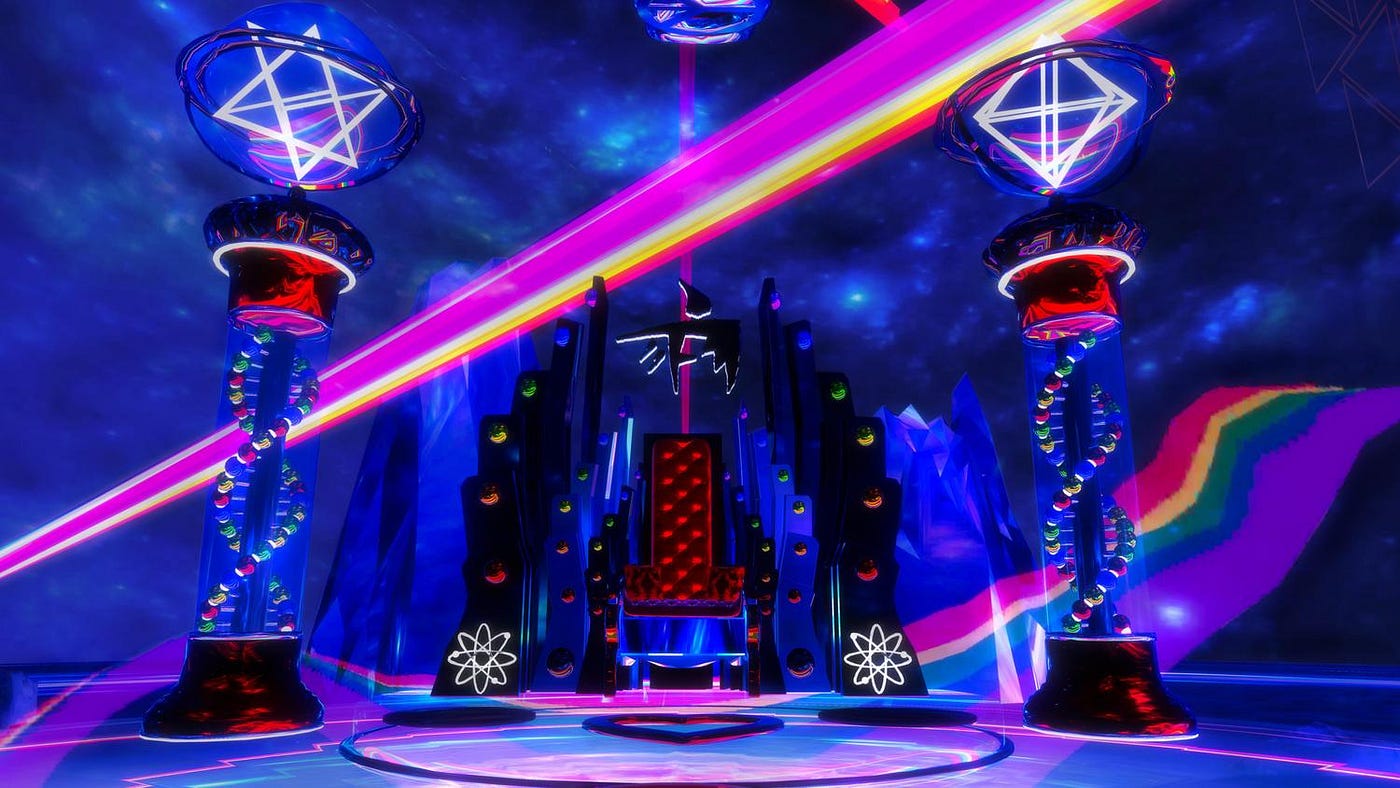
Gumball Dreams
Immersive Theatre; VRChat
There’s a lot to love about the Ferryman Collective’s latest Gumball Dreams. It puts the design work of collective member Christopher Lane Davis, aka “Screaming Color,” front and center in an immersive theatrical VR encounter built around his occult, gumball vaporwave-themed VRChat worlds. There’s also a few elements that rely a little too much on some intimate immersive theater crutches that are starting to show their age for those of us who have been around the block a few times.
Let’s start with what works.
Odds are, unless you’ve already seen Screaming Color’s work on VRChat or you are part of an online VR world building community, you’ve probably never seen anything remotely like Gumball Dreams. At least not rendered as a fully realized virtual world.
The primary playground for Gumball Dreams answers the question of what would happen if the astral plane was also a 1980’s album cover dominated by a towering, glimmering gumball machine. A space which is, in a word exquisite. It is also deceptively sized, with black marble obelisk-like structures concealing pathways to non-Euclidean spaces that have their own logic and aesthetics. In so many ways these spaces are the Platonic Ideal of the virtual reality we were promised. (If you’ve ever wondered what would happen if a Time Lord did too many party drugs and then stole a TARDIS… well, now you know.)
It’s been possible to experience Davis’ work on VRChat for a while now, but the addition of a performance layer has transformed a largely social experience into a narrative one. A collaborative narrative to be sure.
On the structural side of things, director Deirdre V. Lyons and the team have smartly borrowed a format from IRL immersive theatre, a practice Lyons is deeply familiar with as a veteran of many an immersive theatre piece in Los Angeles. Three patrons are greeted in the lobby, given experience appropriate avatars, and then led into the main play space through a very clever path. They are then encouraged to meet with Onxy, a gentle extraterrestial who is coming to the end of their lifespan.
What follows is a round robin structure, where two of the participants head off to encounter a new environment and solve a puzzle, while the third is left to have a one-on-one encounter with Onxy. Structurally this is sound, and it’s all well executed. The side-puzzles aren’t too difficult and the glory of doing this kind of thing in VR and not IRL is that even with a two-person team things can be coded so that everyone gets their chance to be the clutch player.
Somewhat less successful, depending on one’s disposition on any given evening, is the one-on-one encounter. This has less to do with the acting — the performer on duty during my run was Lyons herself, and I’ve played plenty of good scenes with Deirdre over the years — but the reliance of the structure on “cold reading” and prompts that are aimed at drawing thematic intent from the player. That night Deirdre tried tapping into a certain part of my personality, and I wasn’t really having it. But the real secret/problem is with that tactic itself, which has been employed time and time again on the LA immersive theatre scene to — in this reviewer’s eyes — diminishing effect.
There are times the tactic starts to feel like something from low-key therapy. But I’m often far less interested in talking about how I feel about something than I am in learning who this character in front of me is or being provoked by action and intent instead of being prompted to respond. It can be a subtle distinction at times but with a fantastical world why not write fantastical characters to match?
In any case, the one-on-one is a little less than one third of the experience, although the most focused and potentially emotionally intense portion. For those who haven’t had the opportunity to experience such a scenario before, the first time can be mind blowing. And given how few people have had this kind of theatrical experience versus the overall population, I’m sure Gumball Dreams will open more than a few minds up to the possibilities of immersive theatre in its digital, and even physical forms.
The concluding act of Gumball Dreams lives up to the “dreams” part of the name in the form of a vibrant, near-psychedelic experience. Every attempt I’ve made to put it into words either sounds utterly mundane (by trying to explain the mechanics of what was happening) or like gibbering pop-spiritual nonsense. Both fail to get at the transcendental nature of what’s going on. It is true spectacle.
If you find yourself with the chance to jump on the rainbow path to the astral plane of Gumball Dreams, don’t hesitate. — Noah Nelson

(Hi)story of a Painting: The Light in the Shadow
Interactive Film
The second installation of (Hi)story of a Painting explores the life and struggles of Artemisia Gentileschi, one of the very few female professional painters of her era. Narrated by Cerys Matthews, viewers learn about her childhood, her rape by one of her father’s associates, the subsequent trial of her rapist, her eventual marriage and then her husband’s mysterious disappearance, and how difficult it was for Gentileschi to even have a career as a female artist in early 1600s.
The experience also asks viewers to find a few different magical objects as the the story unfolds by tracking the participant’s gaze; after one of the objects is “found,” (Hi)story of a Painting: The Light in the Shadow pauses the main storyline to provide additional historical context and explanation for events in Gentileschi’s life through animating marionette like figures on a tabletop. While these objects are active, the rest of the environment dims, as a way to switch modes before focusing back on Gentileschi.
Many small but clever details help bring Gentileschi’s biography to life in virtual reality, from a mundane ceiling transforming into the ceiling allegory that she painted with her father for Charles I of England, to the way only Gentileschi and her daughter are the only characters depicted in three dimensions here whereas all the men in the story appear to be paper dolls with movable joints. Gentileschi’s story is remarkable and it’s refreshing to see it told in this way. — Kathryn Yu
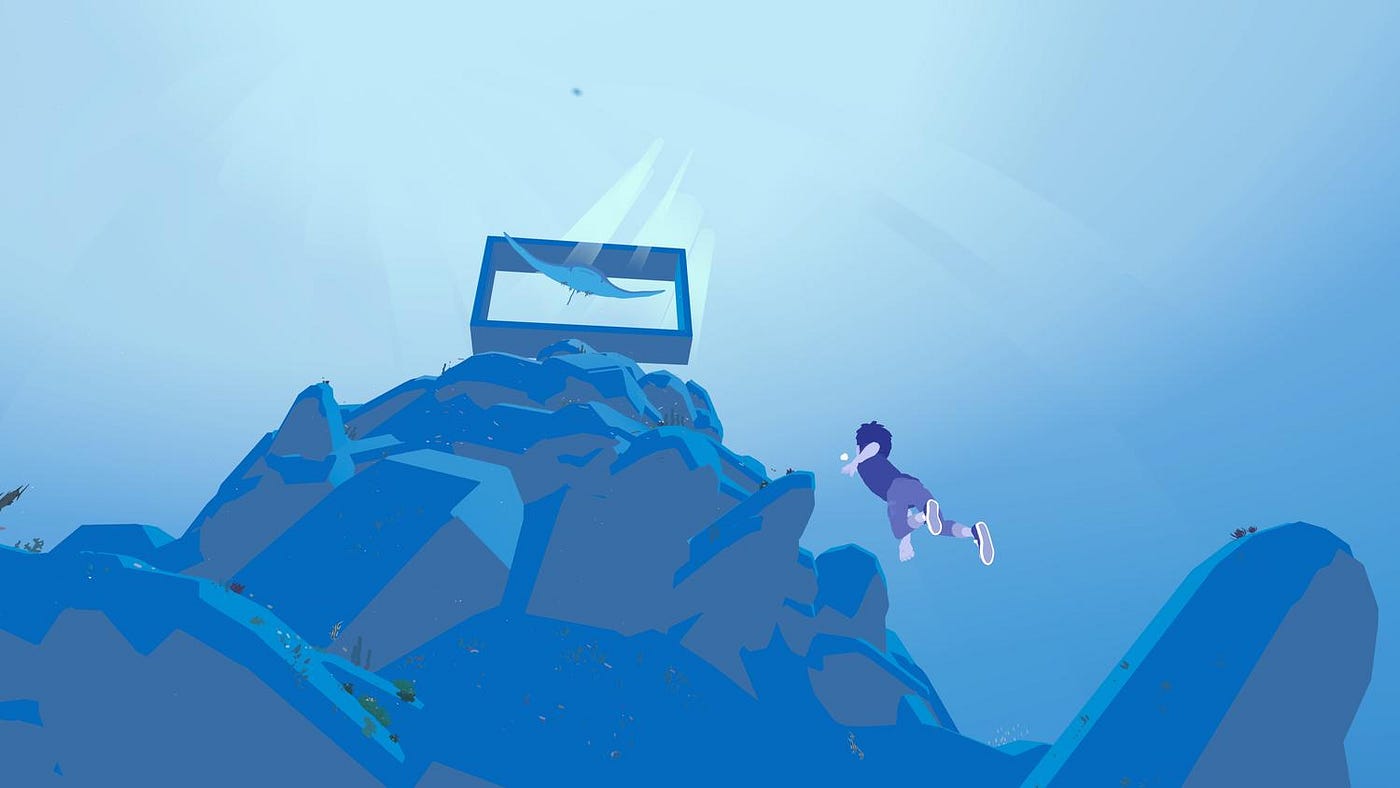
Ihyangjeong: Carving with Memories
360 Film; VAST
Director Sunghwan Lee provides an animated rumination on what it means to be home and to have a home, first describing a childhood where his family was always on the move, and then discussing their eventual landing at Ihyangjeong: a family home passed down over the course of 300 years to his father.
Get No Proscenium’s stories in your inbox
Join Medium for free to get updates from this writer.
SubscribeSubscribe
While I’m a big fan of architecture and historic landmarks and unpacking the history of old buildings (and I’m sure that the ancestral home has a lot of meaning for the creator), the sense of gravitas and emotion doesn’t come across through the dry and somewhat flat narration. And the artistic choice to render the house in stark, too clean 3D also seems to remove a lot of the texture and character that would have probably been much more evident in a simple 2D photograph. I would have loved to have more of an inside peek of what Ihyangjeong looks like today — with all its dust and cracks — rather than a perfect, crisp rendering of it. — Kathryn Yu

Komez Alef O
360 Film
Holocaust survivor Zalmon A. “Victor” Isserlis takes the viewer here on a journey through his memories of World War II. It’s truly remarkable just how much detail he remembers about that time in his life, as he was only four years old when he and his family fled the Nazis via train in the 1940s. As he speaks, the moments and scenes from his life are animated into video game-like environments before us, though sometimes the visualizations can stray into uncanny valley territory. Perhaps the most interesting and meaningful chapter centers around the family landing as refugees in Uzbekistan and, despite poor living conditions, death, and severe illness, eventually find a way to build a new life. — Kathryn Yu
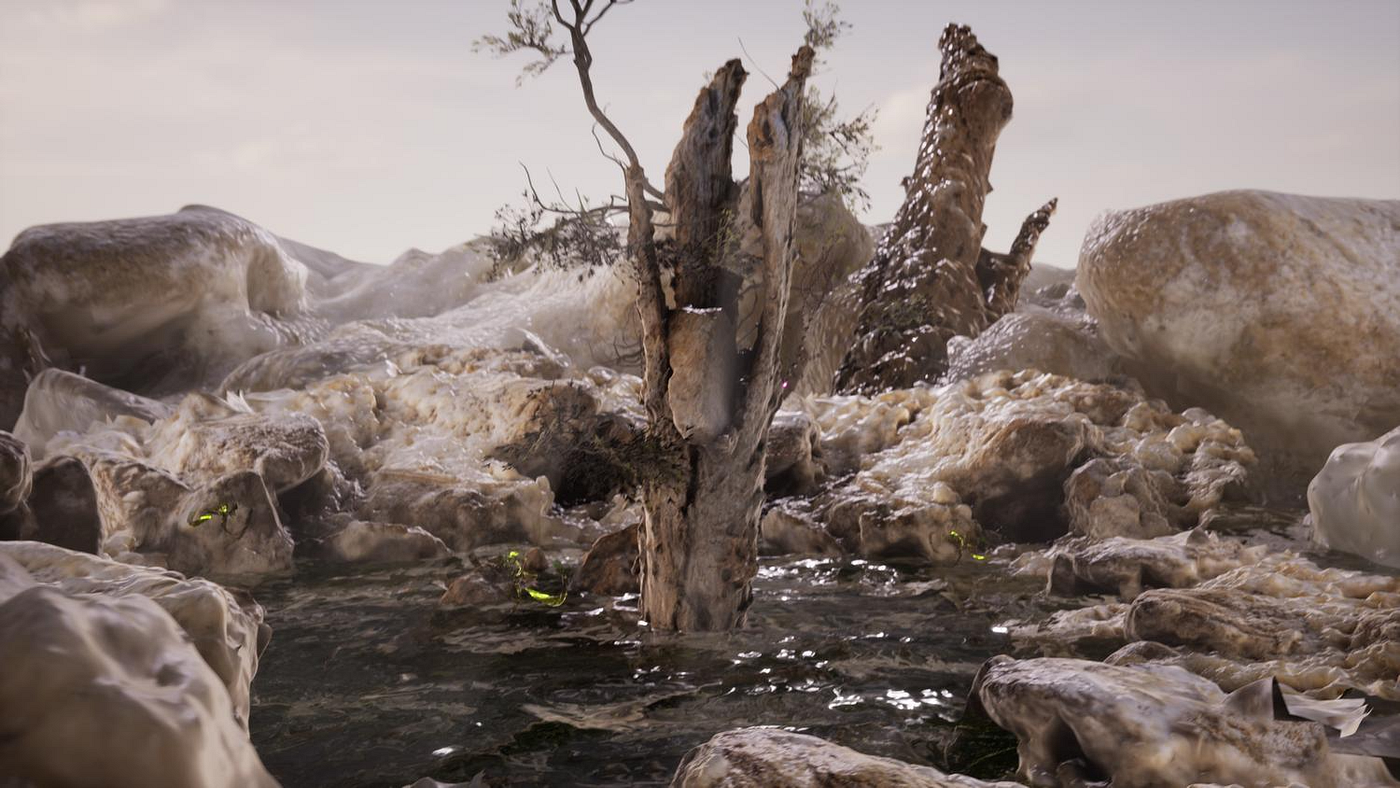
Liminal Lands
Interctive 360 Film; VAST
Liminal Lands takes viewers through a multiple stage journey through nature inspired by wetlands of the Camargue. The landscape morphs and changes all around you as you travel through caves and rivers. The sound is also supposed to respond to participant movement but this wasn’t clear to me. Nor did I feel especially compelled to move or interact with the environment, as the piece lacks cues that the viewer was supposed to interact at all. The overall journey in Liminal Lands is calming and meditative and makes good use of scale but, overall, reads as opaque in its meaning.— Kathryn Yu

LIPs
Interactive 360 Experience; VAST platform
A woman has two pairs of lips: her mouth, and her vulva. Artist Peiying Lin creates a short slow dark-ride like experience in virtual reality that brings both pairs of “lips” to life through metaphor and a strange landscape made up of sensual body parts. Flowers bloom, leaves undulate, and ASMR whispers populate the soundscape, and on occasion, the viewer must reach out and touch a butterfly to continue the experience. The overall effect is surreal and has echoes of Un Chien Andalou. — Kathryn Yu

Lustration VR — Series 1
Animated Film
Lustration is a 4 episode animated series that presents multiple storylines which can be navigated simultaneously in real time using a custom interface (note: only the first two episodes were available during SXSW). Some of the characters in Lustration live in the real world while others live in the afterlife. Some parts of the afterlife are also mirrored in the real world (or is it the other way around?) and, as expected, strange things happen when the real world and afterlife meet. (Spoilers ahead.)
A simple persistent interface attached to the left controller allows the viewer to switch between multiple camera angles or, as it turns out, action occurring simultaneously in the afterlife dimension and the “real” world. While this Truman Show-esque effect works well if the characters remain stationary, things start to get messy when they move around; this is especially evident in episode 2.
Because this is a 3 degrees of freedom experience, you can follow the action in Lustration by turning your body as a character is walking across the room, but as soon as you switch “cameras,” that degree of rotation is lost. I found that my visuals in the headset sometimes implied I was looking straight ahead but the position of my torso didn’t quite match what I was seeing; you’ll need a chair that rotates 360 degrees for this one to work. The misalignment became very evident when two characters in different dimensions realized that they could sense each other’s presence. I would switch to the “real world” camera, turn to the left 90 degrees to see the characters, and then switch to the “afterlife” camera, and then need to turn to the left an additional 90 degrees just to align the two views. What should have been a cool, obvious-seeming trick — being able to switch between the afterlife and the real world quickly while looking at the exact same corner of the room from the same angle — was not possible in Lustration given the limitations of the pre-set camera angles.
Both episodes I screened required at least two viewings and/or some rewinding and fast forwarding, but it was only evident after the first viewing of each episode that I had probably missed some crucial information along the way. Overall, being able to switch between fixed camera angles is a very cool concept but the constant switching via menu can also get in the way of grasping the narrative in Lustration.
That said, the two episodes available at SXSW also felt like a bunch of loose ends getting dropped on the audience with no resolution. In episode one, a hit man and his friend (who both appear to be inside the afterlife) shoot someone (in the afterlife, somehow) but then something goes wrong (though it’s unclear what) and his friend gets threatened by two serious-looking officials (who are twins) and then they accidentally hit someone with their car. In episode two, a police officer investigating a murder of a conspiracy theorist in the real world makes contact with a being from the afterlife in her apartment (and said being also looks like the victim of the car accident in episode 1) but the episode ends right when the officer and being make contact.
Lustration feels like an extended prologue to a much bigger world. Both episodes ended right when it felt like the story was finally picking up steam. But I’m not certain that episodes 3 and 4 (out of the planned four) will be able to solve all the puzzles the plot is opening up. — Kathryn Yu
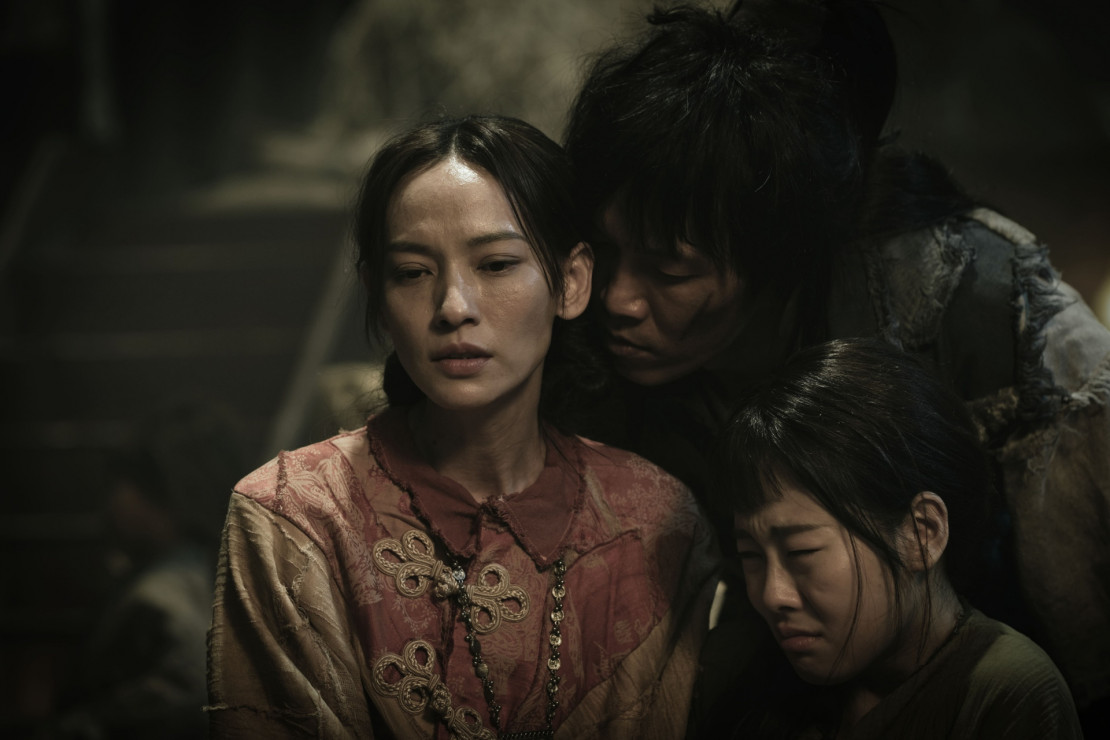
Madame Pirate: Becoming a Legend
Live Action and Tiltbrush Film; VAST platform
Madame Pirate is a film mixing live action scenes with Tiltbrush-driven animations to tell the amazing tale of Cheng I Sao, a real life woman from the early 1800s who ended up commanding the largest pirate fleet in history. The project lets us see things from Sao’s perspective by recreating moments from being sold (alongside her sister) to a pirate ship to her eventual marriage to Zheng Yi and then taking over the ship after his death. It’s a remarkable tale, brought to life with beautiful animations and compelling live action footage, as the filmmakers deftly toggle between two kinds of media in VR. — Kathryn Yu
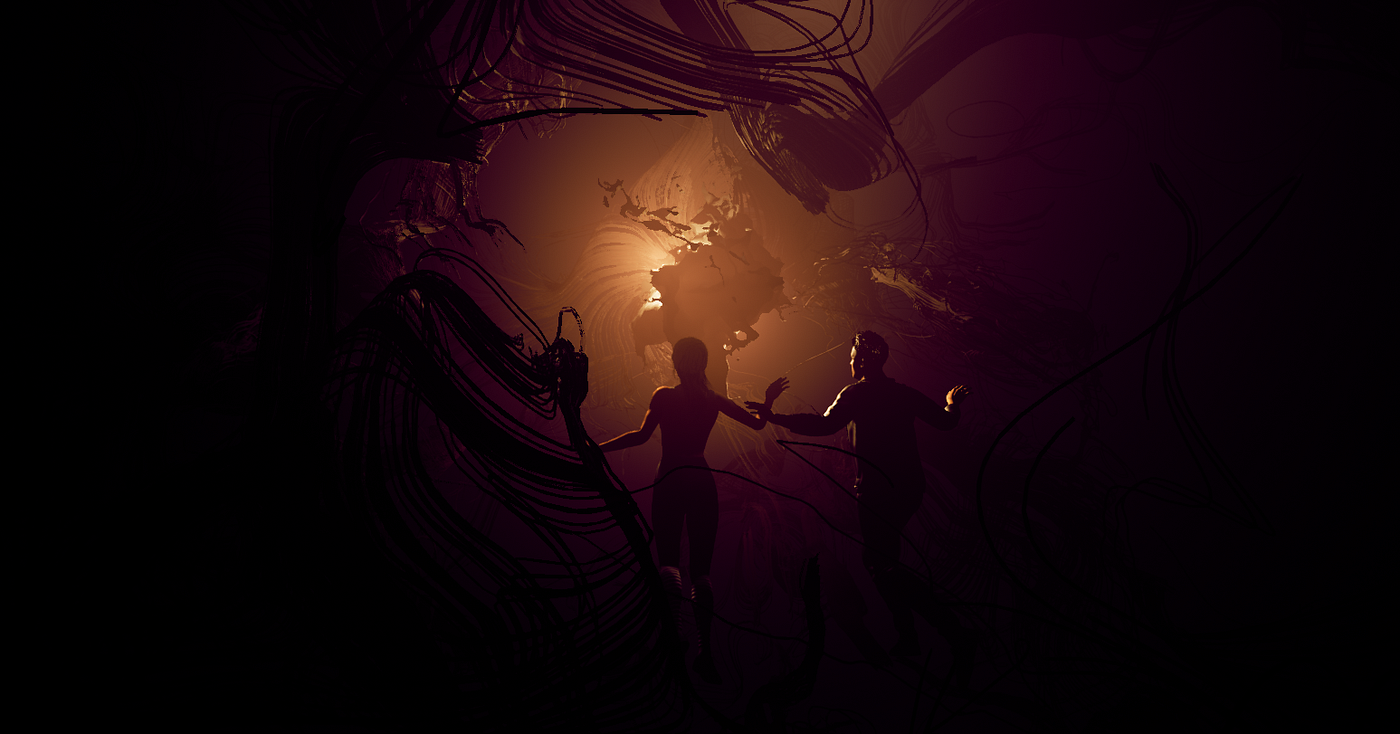
Minimum Mass
Interactive 6 DOF experience; VAST
Minimum Mass is an interactive, animated experience about one couple’s experience with miscarriage. While it’s based on a true story and personal experience, the narrative is infused with surreal science fiction elements, particularly when it becomes clear there is something otherworldly going on inside of Rabia’s body. The piece places its characters inside gorgeous dollhouse-scaled sets which are also interactive in VR; the experience starts with a short tutorial teaching the participant how to lift up or pull down a miniature set as well as rotate it in front of them. The very detailed environments are set up so that if you want, you can peek at the action through a doorway or window, and feel more like a spy or peeping Tom as the characters converse. You can also view them from the side of the room through a cutaway, much like a child’s dollhouse. The poignant scenes between Rabia and Sky are interspersed with scenes narrated by Rabia, exposing her inner monologue and thoughts, as you observe a mysterious, womb-like space around you. The viewer’s role is also cleverly hinted at in the final sequence of the experience, tying the whole scenario together in a meaningful way. — Kathryn Yu
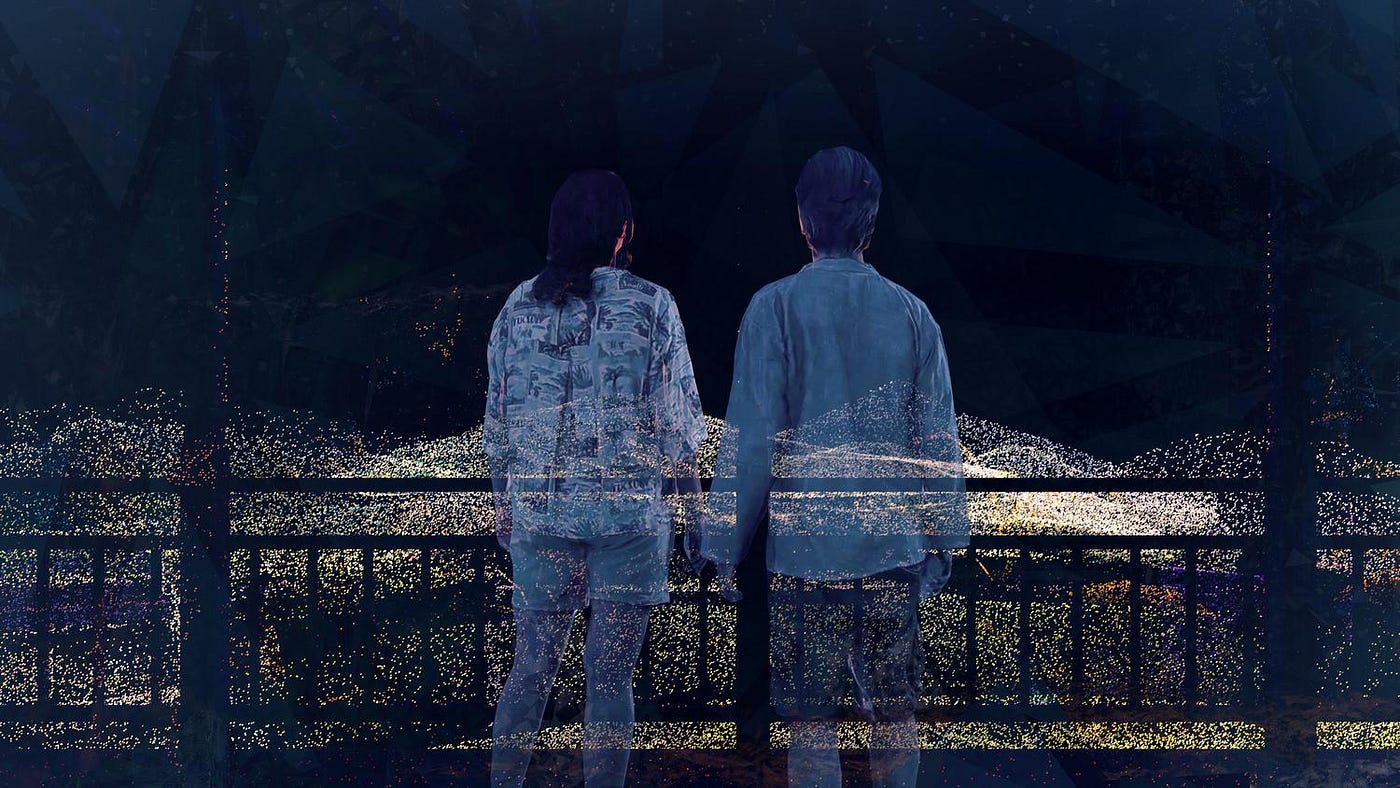
On The Morning You Wake (to the End of the World) Ep. 2 & 3
Meta Quest; Wide Release: March 24
It would be trite to say that the second two episodes of On The Morning You Wake (to the End of the World) “hit differently” now than the first episode did just seven weeks ago, but they do.
After all, when the first episode of this series — which examines the 2018 false alarm warning of a ballistic missile headed towards Hawai’i — was released at Sundance, the thought of nuclear war wasn’t part of our day to day lives. Even if, as the series makes the case for, it really should be.
Then Russia’s invasion of Ukraine and Vladimir Putin and his surrogate’s reckless saber rattling of their nuclear arsenal began. Completely daft takes about “limited nuclear exchanges” proliferated on Twitter and in the grander media sphere.
So these episodes, which continue the story of what happened to everyday folk in Hawai’i as they confronted what might have been their last minutes on Earth and adds a survivor of the United States’ bombing of Hiroshima to the mix for maximum impact, well they do hit different. The stakes have changed. And while I still find myself resolved to the idea that nuclear weapons shouldn’t exist, there are added dimensions in the cultural conversation that add new shadows to the perspectives recorded here.
The storytelling by Archer’s Mark and Atlas V is even more on point than even the already tremendous episode one of On The Morning You Wake (to the End of the World). The series wraps up with episode three, with the middle chapter a real high water mark thanks to the aforementioned survivor.
Not that we necessarily need a reminder of how barbarous we can be to each other. I still found something grounding, if not actually hopeful, in the way OTMYW reaches for perspectives that can move us collectively past the dialectics of power and conflict. This is manifested not only in the writing that relies on Hawaiian poet Dr. Jamaica Heolimeleikalani Osorio for a spoken word framing structure but in how the volumetric point cloud aesthetic is used to viscerally evoke our oft-ignored interconnectedness.
Overall, a visual and kinetic expression of a different kind of atomic age. — Noah Nelson
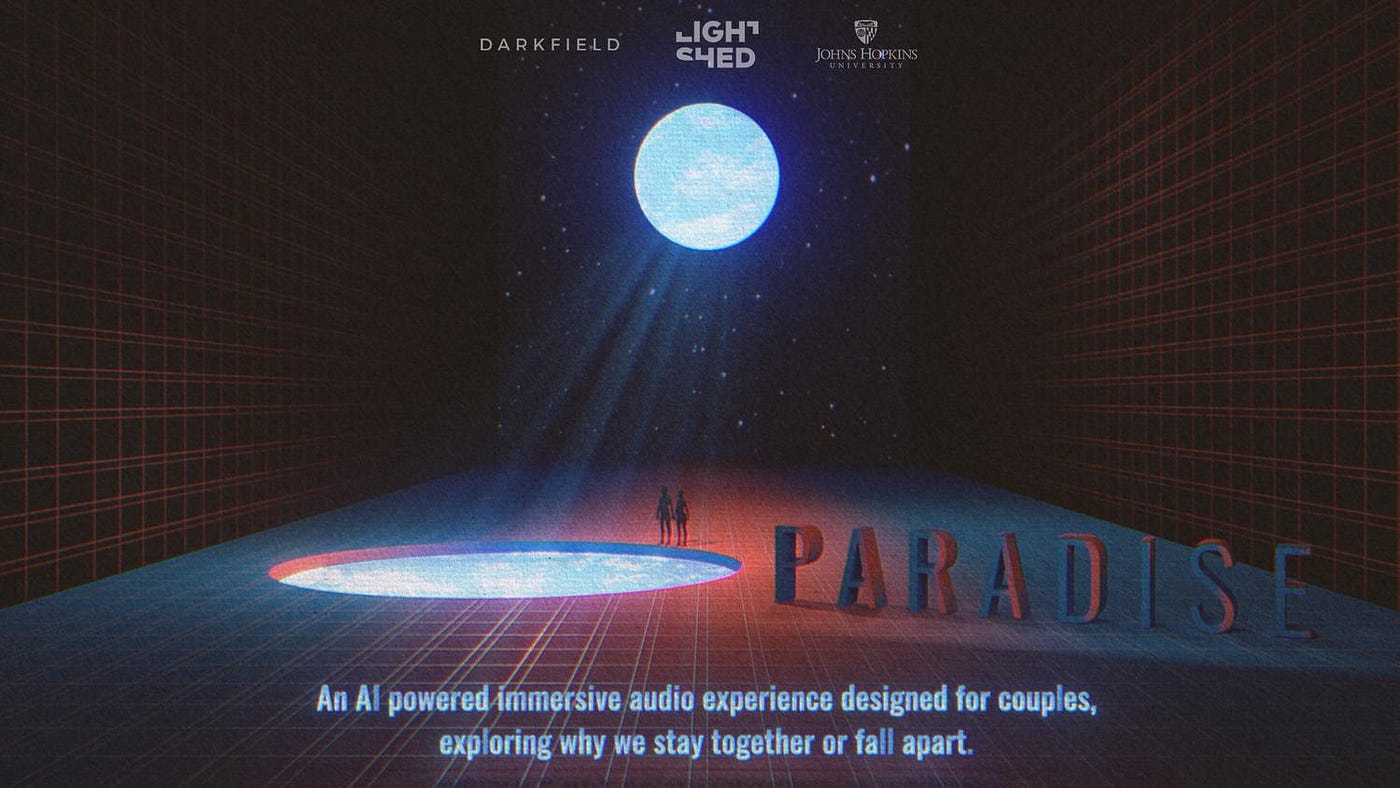
Paradise
Spatial Audio; custom app
Paradise is VR filmmaker Gabo Arora’s first collaboration with the masters of spatial audio, DARKFIELD. It is a short audio experience about intimate partner violence designed primarily for two people in a relationship. (Sorry, single folks, you really can’t do this one solo… and it might be a bit weird to do it with a good friend.)
The conceit here is that you and your partner are entering some sort of relationship-based audio “program” (which is kept purposefully vague) where you answer questions aloud which resemble a cross between therapy and a matchmaking exercise. An alert is also sounded whenever the differential between your responses and your partner’s responses is too large. Depending upon how you answer a few questions up front, you may also be asked to do different physical actions (nothing too strenuous), though from my experience the bulk of the content is pretty much the same for both participants. And in many of these “exercises” you get to eavesdrop on other couples going through the same program, though they, for the most part, are doing so rather unsuccessfully in comparison to you.
While some of DARKFIELD’s most successful work has actors directly addressing the participant (such as in ETERNAL and THE INVISIBLE), you’re an aural voyeur for the most part here, which leads to some uncomfortable moments when physical violence begins between one couple and you simply listen in on it. (Luckily, this scene is rather brief.) That said, the subject matter in Paradise is treated respectfully and with care. The most effective moments of the project center around a description of the case of Francine Hughes (one of the first legal cases involving “battered-woman syndrome” as a defense) and a series of women reciting various rationales for staying with an abusive partner. But, overall, the work doesn’t seem to land with a ton of long term emotional impact. — Kathryn Yu
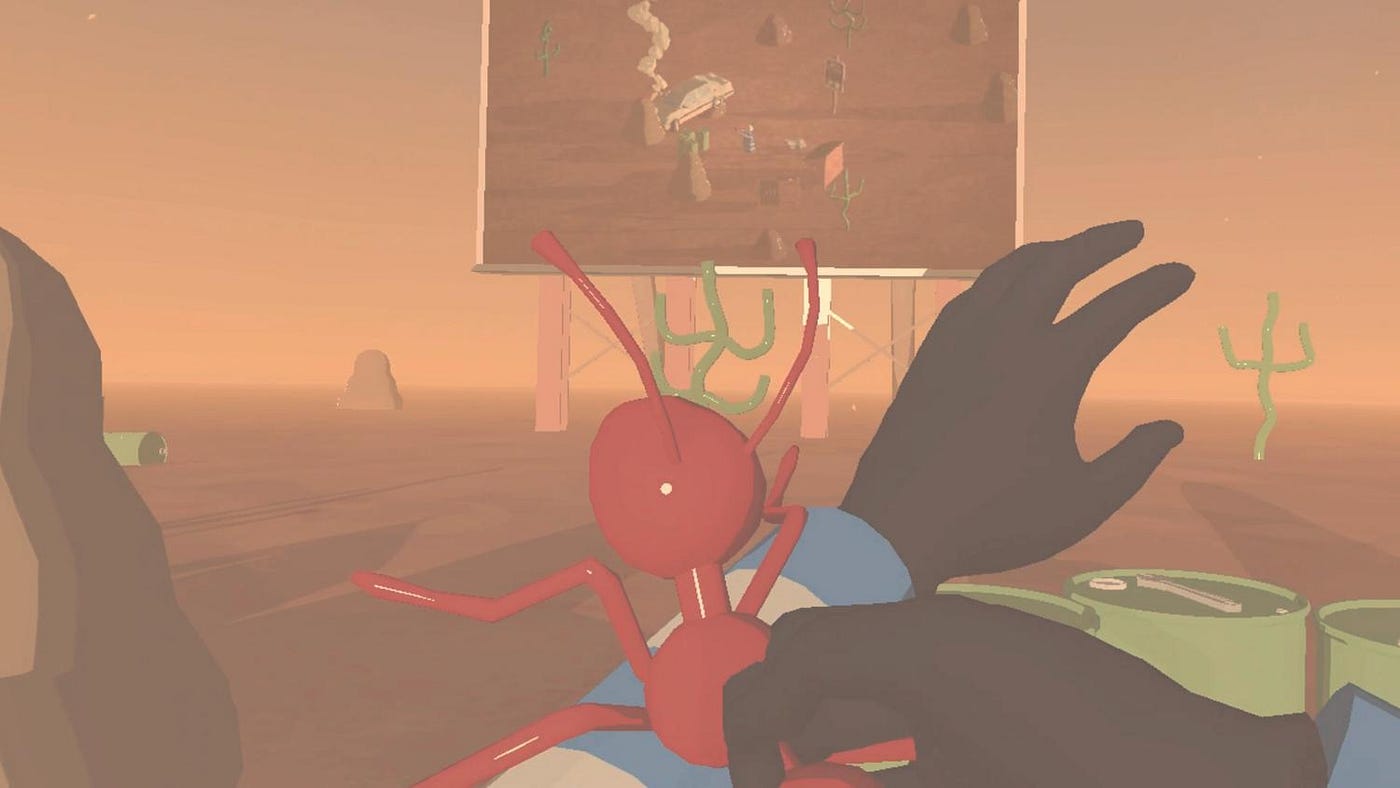
Red Antz VR
Interactive VR; VAST
This interactive music video experience puts participants inside a surreal desert landscape where everything is an instrument. Literally! Pick up a wrench and bang on a parked car. Or grab an ant from the ground and put it on your body. No, really, that’s what they want you to do here; there’s instructions and signage asking players to pick up four different ants who are crawling around the world and place them on your avatar’s body. Once you’re wearing the ants, the real fun begins as the insects contain music provided by the experimental punk band Palberta.
Red Antz is playful and wacky and reminded me of a lot of the best of VR: unexpected, interactive, and leaning into the weirdness of it all. — Kathryn Yu

Surviving 9/11 — 27 hours under the rubble
360 Film; Oculus TV
Surviving 9/11–27 hours under the rubble takes us into the life of Genelle Guzman-McMillan, the last person to be rescued from Ground Zero after spending 27 hours trapped under one of the collapsed buildings. We hear not only the horrors of that particular day but we also see and imagine what it must have been like to be a new immigrant to the United States from Trinidad and Tobago falling in love with New York City and getting a new job at the World Trade Center.
The piece also achieves some feats of technical mastery in allowing viewers to feel as if they are in late 1990s/early 2000s-era Lower Manhattan in 360 degrees; archival film photographs have been put into virtual reality, often with very subtle animations or other effects to make them feel more three dimensional. The middle segment puts us into renderings of Guzman-McMillan’s last moments in the office on September 11, 2001 as she describes moment by moment what she went through, from her cubicle to a conference room to a stairwell evacuation. And the film also superimposes the same intersection or block in modern times on top of archival photos, allowing the ghosts of the past to reach out into the present.
It’s a touching, haunting story, all told in Guzman-McMillan’s words. It’s also enlightening to get a sense of who Guzman-McMillan is as a person today, many years later, especially as the camera crew follows her first to her home and then to visit the 9/11 Memorial. Overall, Surviving 9/11–27 hours under the rubble is a fantastic reminder that disasters unfold not only on a macro scale, but also a micro, personal one. — Kathryn Yu

Weird Times (Episodes 1 and 2)
360 Film; VAST
Each episode of this 5-part VR series puts the viewer into the shoes of a different teenager to provide a firsthand perspective on issues like depression and ADHD. (The first 2 episodes #happyFail and #brainFail were featured in the SXSW XR Exhibition, with a full series launch to come.) #happyFail uses a game show framing, under the guise of a teenage girl with mental health issues who is staying home from school for the day, and suddenly finds herself inside of a game show where the host (and crowd) jeer at her for being a failure. Meanwhile #brainFail takes us inside the running inner monologue of a teenage boy who has trouble focusing in class and is labeled “stupid” by his peers, and finds hope in a fictional superhero character.
The overall tone is humorous, witty, and self-aware with #happyFail being the more successful of the two episodes I watched. A snarky game show host using his “TV voice” to gaslight the protagonist in the same way that someone might verbal self-flagellate really works, whereas the superhero character providing a source hope in #brainFail feels a bit too tidy, in a real deus ex machina way. — Kathryn Yu
Discover the latest immersive events, festivals, workshops, and more at our new site EVERYTHING IMMERSIVE, new home of NoPro’s show listings.
NoPro is a labor of love made possible by our generous Patreon backers. Join them today!
In addition to the No Proscenium website, our podcast, and our newsletters, you can find NoPro on Twitter, Facebook, YouTube, Instagram, in the Facebook community Everything Immersive, and on our Discord.



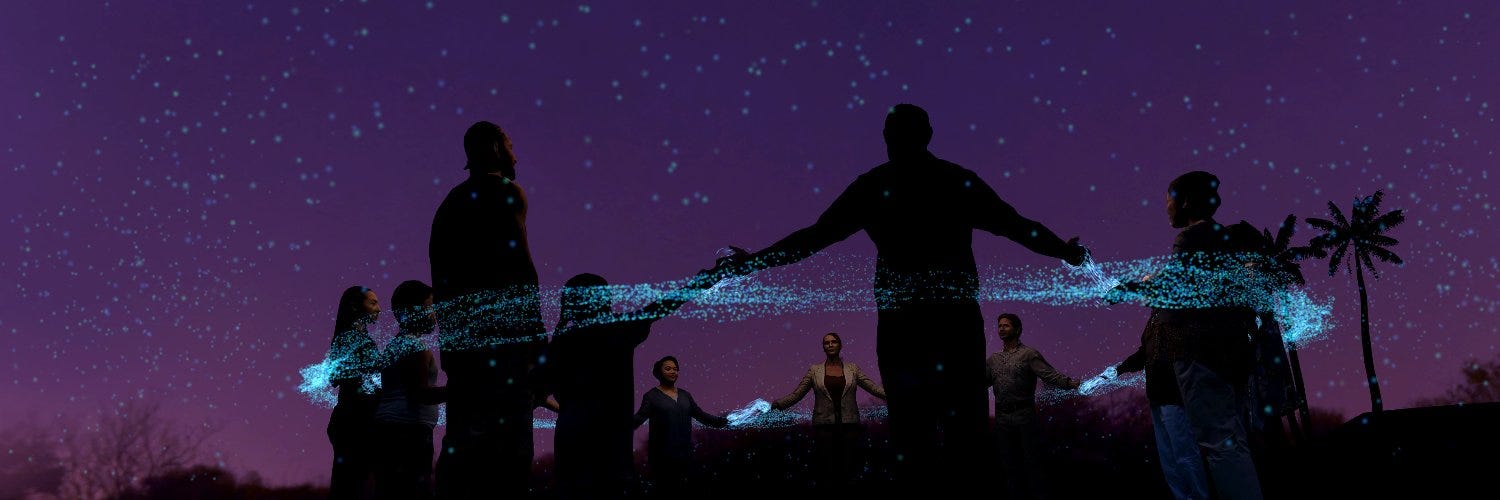











Discussion